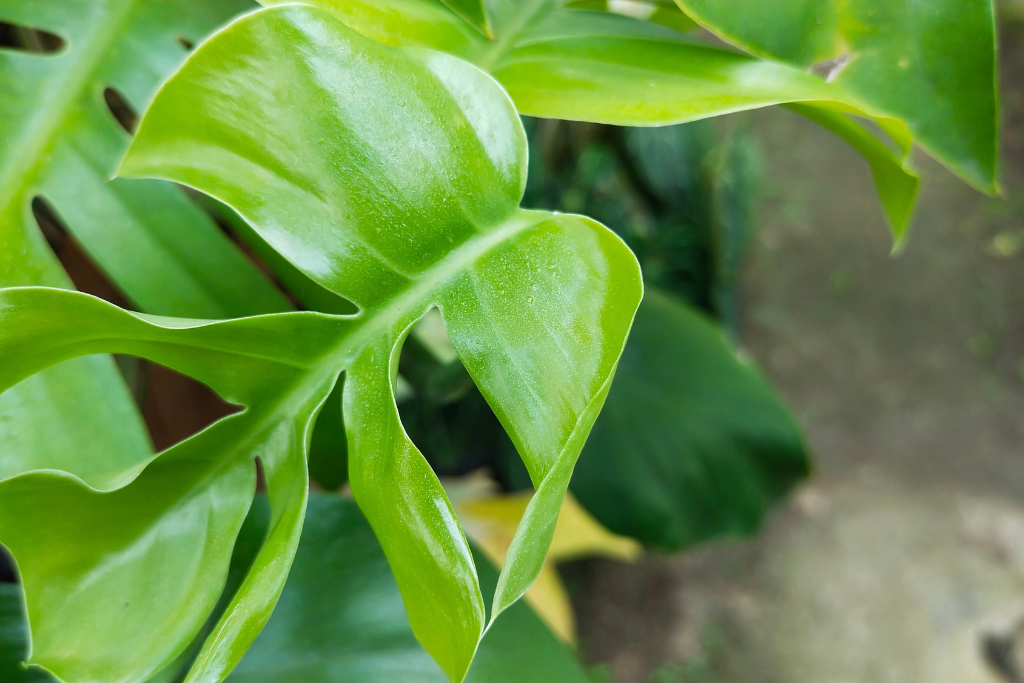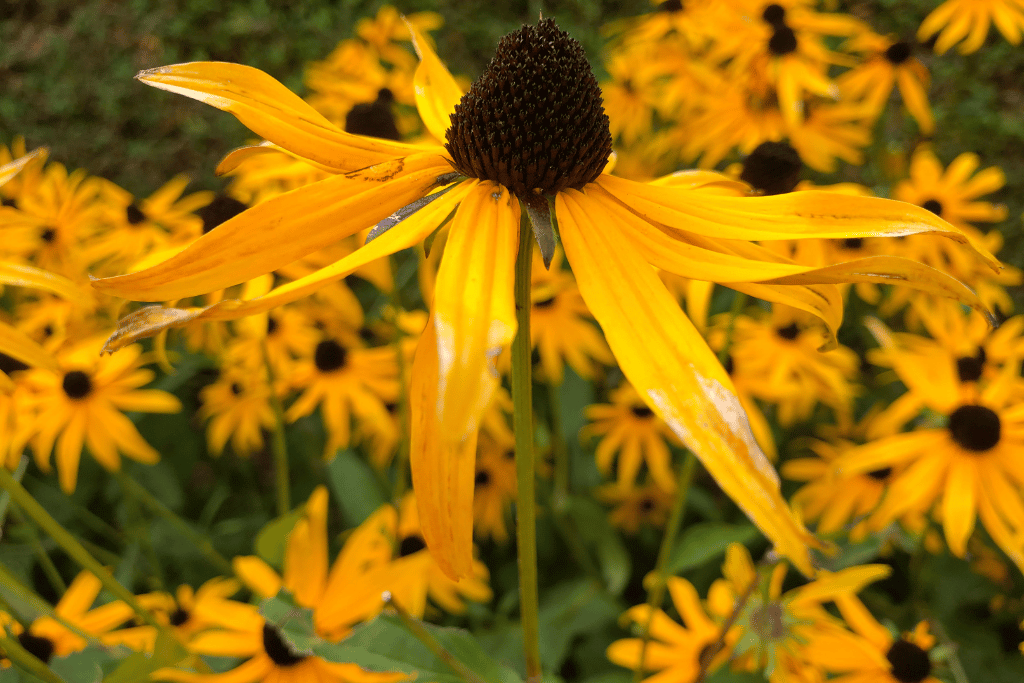You have planted a serrano pepper plant, and it has started producing fruit. But now you’re wondering whether it is too soon to pick it. If you’re in this situation or anticipating it, here is a solution.
Serrano peppers are usually ready for harvest 80-90 days after transplant. You can also notice their color to determine their ripeness. They start as green when they ripen and gradually turn red.
But if you truly want to learn when it is the right time to harvest serrano peppers, follow along as I dive deep into different indicators of serrano pepper ripeness.

Types of Serrano Peppers
There are three types of serrano peppers based on color. These colors represent the level of ripeness, and they’re important to understand before learning when to pick serrano peppers from the garden. For example, if you want a milder flavor but don’t know about the colors, you might end up biting down on a hot red serrano pepper.
Here are the three major types of serrano peppers based on their color:
1. Green Serrano Peppers
Green serrano peppers are preferred for their crispy feel and milder heat level. They’re ideal for pickling or padding in salsas. It is the first level of ripeness in serrano peppers.

The color can range from light to deep green. They’re lower on the heat because they contain less capsaicin, the chemical responsible for setting our tongues on fire.
2. Red Serrano Peppers
Your serrano peppers will start off green and gradually turn red if you let them mature. At this stage, peppers are less crispy and prone to having their skin broken if not harvested.

They also have a much stronger heat than the younger green peppers. Due to their level of maturity, it is best not to store them for long, as they tend to bruise or go bad sooner.
3. Yellow Serrano Peppers
Yellow color is not a stage of maturity, but a different variety of serrano pepper altogether. This variety also starts as green and turns yellow (instead of red) when fully ripe. If you want to grow yellow serrano peppers, make sure to get the appropriate seeds.

Their taste and heat slightly differ from regular green/red peppers. They are often used as a garnish due to their bright yellow tinge.
When to Pick Serrano Peppers
Let us now look at some indicators you can use to know when to harvest serrano hot peppers. In my experience, time and color are some of the most easily remembered and noticeable signs of ripe serrano peppers.
However, I have listed some other ways I have used over the years to identify ripe serrano peppers.
Time to Ripe
One of the safest ways to know when are serrano peppers ready to pick is to follow the calendar. In a healthy environment, serrano peppers ripen fully about ninety days after transplant.
The question is, which type of pepper do you want?
You can mark the calendar 60 days from the transplant if you want green peppers. At this time, the peppers will have just turned green and are ready to be picked. However, I’d advise you to wait a few more days to let them develop a deeper flavor without turning red and hot.
If you want hot and red peppers, wait at least 20 days more (80 days in total). By this time, the peppers will have turned red, hot, and thinner. After about 90 days, the peppers’ skins will bruise and split.
Lastly, if you’re planting a specialized serrano variety, make sure to check the seed packet for the rate of maturity. Moreover, the growth rate of serrano peppers can be affected by factors such as sunlight, watering, fertilizing, soil quality, etc.
Color
As I already mentioned, color is a clear and straightforward indication of serrano pepper’s ripeness and heat. Every pepper will ripen once it turns green and gradually get thinner, hotter, softer, and redder with time. Pick appropriately depending on the level of heat and the texture you desire.

Moreover, regardless of the variety, every serrano pepper will start as green. It will not necessarily turn red afterward, like in the case of yellow serrano peppers.
Pepper Length
Pepper length is secondary if you’re going by the calendar; however, it is still an important attribute to consider if you want a particular size. Serrano peppers can be anywhere between 1-4 inches long when ripe. Moreover, smaller peppers are hotter as they contain more capsaicin per unit area.
It is best to pick peppers 3-4 inches long and half an inch wide. Furthermore, for particular varieties, make sure to check their average size before harvesting them.
Brown Stripes
When serrano peppers grow out faster from the inside than their skin can handle, they tend to develop brown stripes at their surface. Also known as corking, it is like stretch marks and a sign of ripeness in serrano peppers. It happens when the plant gets more water, nutrients, or sunlight than needed.
Corked peppers have thicker skin and tend to taste spicier and sweeter than ordinary green serrano peppers.
Weather
You can also use weather or temperature to tell you if your serrano peppers are ripe. Serrano peppers, much like other peppers, produce fruit during warm weather. If winter is close and you still haven’t harvested them, it is time to do so. If you can give your pepper plants similar warm conditions indoors, they will keep producing fruit throughout the year.
The ideal temperature for serrano peppers production is 75-80 F during the daytime and 55+ F at night. Just like colder temperatures are bad, so are overly hot temperatures. An environment with a temperature of more than 80 F will reduce production.
Lastly, even if you can determine the ripeness of your peppers using temperature, it is much more complicated with more room for error. It is simply better, in my opinion, to use color or time to guide you regarding when to harvest serrano peppers.
Skin Thickness and Texture

When serrano peppers begin to ripen, they tend to have thinner skin with a crunchier texture. As they ripen, the skin gets thinner and softer. So if you’re interested in using their texture and skin thickness for particular dishes, like in a salsa where crunch can add texture, it is helpful to keep an eye on the thickness of the peppers and pick accordingly. On the other hand, red serrano peppers are softer and easier to prepare.
Plant Height
You can also use plant height as a metric to tell you whether it can produce and ripen serrano peppers. A mature serrano pepper plant will reach about 2-3 feet. By this time, it will have produced fruit that is near to or ripe enough to be harvested.
Comes off the Plant Easily
Lastly, one physical sign of the ripeness of serrano peppers is how easily it comes off the plant when you pick it. A gentle jerk will be enough to remove the pepper from the stem if it is ripe.
Final Words
When it comes to gardening, it is best to keep things simple and not overwhelm yourself with unnecessary details. Therefore, the best way to determine when are serrano peppers ready to pick is to track time or check their color. Depending on your desired flavor, texture, and heat, you can wait some more for your peppers to turn red.
Some things to remember when harvesting serrano peppers are wearing gloves, using shears or scissors, and keeping things sterile to protect the plant from unwanted germs.
Frequently Asked Questions (FAQ)
How spicy are serrano peppers?
Serrano peppers have a bold, sharp, and hot flavor between 10,000-25,000 SHU (Scoville Heat Units). The pepper starts as green, which is milder, and gradually turns red when it reaches its maximum heat.
Can serrano peppers still ripen after picking?
Serrano peppers may change colors after you have picked them off the branch. However, research indicates that peppers do not ripen once harvested, even if you use ethylene, a popular ripening agent.
What happens if I take too long to harvest serrano peppers?
Waiting too long to harvest, even after the peppers have turned red, can lead to a few problems.
Firstly, if you wait too long, some peppers will start dropping off the plant while others will rot on the stem. Secondly, waiting too long before harvesting will reduce the overall yield. If you keep picking off the peppers as they mature, you’ll give more time to your plant to produce fruit throughout the growing season. Waiting too long will reduce that productive window, and you’ll have a smaller yield.
How soon can I harvest serrano peppers?
You can pick off serrano peppers as soon as they turn green. However, based on my firsthand experience, waiting a couple of days is a good idea to let them develop a deeper flavor without getting too hot.
Are serrano peppers hotter than jalapenos?
Yes, serrano peppers are hotter than jalapeno peppers. Serrano peppers range from 10,000-23,000 SHU, while jalapenos range from 2,500-8,000 SHU.
How can I store serrano peppers after harvesting?
You can keep them at room temperature or in the refrigerator. In such conditions, they can last anywhere between 2-3 weeks before they begin to rot. You can increase their shelf life by several months by freezing them, but thawing them will often lead to soft and mushy peppers.



